ON THE ROAD TO MANDALAY…….December, 2013
ON THE ROAD TO MANDALAY…….
This is my second journey into Myanmar by motorcycle. My first trip was in January of 2013. Here is a quote from that report:
Crossing the border by motorcycle and most private vehicles, into Myanmar has been forbidden for decades. With a new constitution, and changing political parties, the possibility now exists. Being part of one of only three groups of motorcycles that have been allowed to enter, as of this writing, our trip report follows ….. Six Days in Myanmar,
Several groups have made the journey since then, but it still requires many authorizations and permits. That first trip was six days and approximately 1,250 kilometers and of limited scope.
When my friend, Armin Schoch, contacted me in August and asked if I was up for a 12 day, 3,100 kilometer trip in December, I jumped at the chance. The highlight for Armin and I would be a first time destination of Inle Lake. After our previous trip we discussed this possibility and Armin was able to put it together.
The first trip was ‘invitation only’. This time Armin was opening it up to others through his travel agency, Impulse Tourism, and Classic Bike Adventure Tours. I am not big on riding with groups, especially when having no knowledge of their riding skill level or experience. But, hey, when opportunity knocks, one can’t be too choosy.
Joe Sauerborn, (the best mechanic in Chiang Mai, Th) would be with our support truck. Besides taking care of my bikes here, I also traveled with Joe on an epic 4 motorcycle trip around North Vietnam in 2011. Luc DeWaegh, (whose company I quite enjoy), has residences in both Thailand and Myanmar, was with us on our first trip and would again be joining in. I knew all would be well.
So, on December 2 I met my travel companions in Mae Sot, Thailand, on the Myanmar border. We were all anxious to begin our adventure the following day. All, except my friends mentioned above, had flown into Thailand just for this trip. We set out with 12 motorcycles, ridden by 6 Germans, 3 Australians, 2 Swiss, 1 Belgian, and 1 American. One support truck and one car manned by our Myanmar support staff and guide. Two of the Germans are women, and our ages ranged all the way to seventy two. Yes, 72. I only hope I ride as well and have the same stamina as I age.
Myawaddi, Burma
Day one; After crossing the border, our trip began with the crossing of the Dawna Mountain range, currently the only route available to enter Myanmar. This is the most treacherous and dangerous 32 kilometers of the entire trip. The climb begins after crossing the border, a few kilometers outside Myawaddi. The road is the main transit point for cargo and workers crossing between the two countries. It is packed with trucks, buses and other vehicles which are only allowed to travel in one direction on alternate days. This is a major consideration in trip planning.
We found that on the open roads, the trucks were extremely courteous. Signaling when it was clear to pass, and even dropping off to the side of the road to make room. On the mountain all that goes out the window. Everyone battles for any opportunity to pass the vehicle in front and hopefully get a break from the dust and exhaust fumes. More than once I dove for a window of opportunity and was literally nudged by the bus or truck I was passing. I never seem to get photos of the truly bad sections as I don’t want to stop and be passed, then have to again battle to regain my position. Some exhilarating riding, but also why they count the number of vehicles that enter the mountain and compare to how many leave. I passed a rescue truck, traveling against traffic, using lights and siren and also occupied by armed soldiers. I could only hope that it was not for one of our riders.
If one truck stops for a problem, everyone with four or more wheels stops. Our support truck was delayed as it had to wait in line while a very large truck changed it’s punctured tire.
Along the road are rest stops with many water hoses. This free service is for cooling brakes and radiators, some wash their cars before continuing. At the bottom of the mountain I used one to wash my bike. The road is somewhat improved since our first trip. A particularly long dirt stretch from Myawaddi to the mountain is now paved.
We three ‘residents’ of Thailand were on our own dual purpose type motorcycles. All our European and Australian riders were on rental ‘street bikes’ (Kawasaki ER6N and Versys). They deserve great respect for navigating this section of road safely. Everyone made it without any major incidents. Unfortunately, due to major delays at the Thai border , we were well behind schedule. We were forced to ride long into the night, which is dangerous anywhere, but extremely so in Myanmar. We didn’t reach our hotel in Kyaikhto until after 9:00PM.
Kyaikhto
Our first overnight stop, Kyaikhto is the home of “Golden Rock”. An astounding natural phenomenon that has turned into one of the most popular and sacred religious sites in Myanmar.
However, this trip I didn’t see it. Why? You must take trucks from the bottom of the mountain which are filled with approximately 30 people. It is about a 45 minute ride to the top. Upon our arrival at the site, we found absolute pamdemonium. It some special celebration, all fees were waived, and adults and children by the thousands ( no exaggeration) were attempting to get up to the rock.
We were later told that it was wall to wall people at the rock. Long lines of people were pushing and shoving to get on a truck to come back down. Photos of Golden Rock are posted in my other trip report.
Four of us, three who had seen it last trip, decided to stay behind and have lunch while waiting for the others. This turned what was scheduled as a two hour stop into almost five hours. Luc, Andrew (Aust.) and I decided we would ride on to the next destination (153 km)to avoid riding in the dark. We didn’t make it. We arrived at the hotel after an hour of riding in the dark. The rest of our group arrived some time later finally getting off Golden Rock and, having skipped lunch.
The main problem riding in the dark, is the large number of trucks plying the roads (and unlit horse carts and bicycles). They have multiple bright driving lights on the front that are extremely bright. Equally as bad is they have white lights pointed to the rear which are also blinding. The motorcycles and cars actually drive into the night with their lights turned off, only turning them on at the last minute when they see another vehicle approaching. During the day, people were constantly calling and pointing for us to turn off our headlights. On newer motorcycles this is not possible. They believe having your lights on uses more fuel or drains the battery. It was similar when I first came to Thailand, and it is actually illegal to drive with lights on in Cambodia.
Bago-Pyay
We overnighted in Bago. On our way out in the morning we visited this huge reclining Buddha. Continuing we traveled approximately 300 kilometer to the town of Pyay, located on the Ayeyarwaddy (Irrawaddy) River.
We rode these lifts to enter the Shwesandaw Pagoda, built high above street level with a scenic view. The pagoda is believed to hold ‘hairs of the Buddha”.
Our Private Bungalows for the night. Most all our accommodations were first class resorts.
On the road again, approximately 350 kilometers to Bagan. This ride is mostly flat or rolling plains with long stretches of straight, but narrow bumpy open roads. We passed through numerous small towns and villages, taking breaks and enjoying ourselves with the people. The people were always cheerful, curious and welcoming.
Our Meals were generally plentiful and delicious. Especially welcome after a hard mornings ride.
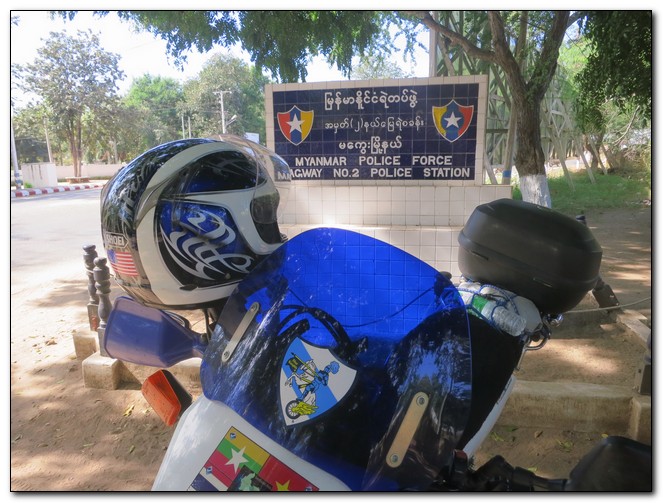
For my Blue Knight friends. Certainly a “Blue Knights LEMC” emblem has not been seen here before.
The way we travel is not like “ducks in a row”. Our guide would tell us how far we had to travel to the next stop or turn. We could ride at our own pace and just meet at that point. Usually Armin raced into the lead and was waiting at our next meeting point. The support truck always followed the last rider.
- Myanmar Highway 2
We crossed several dried river beds as we approached Bagan. Soon we were down to a small two lane road and then, very unexpectedly, some river crossings. This caught a few of the riders off guard as they don’t have many of those on European highways. As we were following my GPS at this point I also began to question if we were on the right road. Sunset was approaching. We found we were correct and this was a main route to Bagan. I wondered how they ever entered the city during the rainy season. Some told me they just wait for the river to go down. I later learned there was another way in from the north on an improved highway, but the government didn’t give permission for us to ride that road and we didn’t really want to ride a highway anyway.
Bagan
We rolled into Old Bagan at sunset.
The population of Bagan in its heyday is estimated anywhere between 50,000 to 200,000 people.Until the advent of tourism industry in the 1990s, only a few villagers lived in Old Bagan. The rise of tourism has attracted a sizable population to the area. Because Old Bagan is now off limits to permanent dwellings, much of the population reside in either New Bagan, south of Old Bagan, or Nyaung-U, north of Old Bagan. The majority of native residents are Burmans.
The following morning we loaded into our support truck and turned into genuine tourists. Our first stop was the Shwezigon Pagoda. Dating back to 1102 AD it is believed to house a bone and tooth from Buddha.
Doing the tourist rounds we visited a number shops and sites. It is said that there were at one time more than 10,000 Stupas and Temples in between the 11th and 13th centuries. Due to earthquakes, 400 in the 20th century alone, and natural aging, there are now approximately 2,200. Many are irreparably damaged. The repair and restoration have been controversial. More on that when we get to Inle Lake.
We visited a shop specializing in lacquer ware. We were able to see the process from start to finish. I don’t think it would be a surprise if I mentioned the wares were also for sale.
Viewing the sunrise or sunset over Bagan is a must for any tourist. I don’t do sunrise well. So as sunset neared we set off using alternate transportation to take in the view from atop a temple.
As we were approaching our viewing point, I became caught in this rather dusty traffic jam. A tour bus behind kept blaring his horn for us to hurry or allow him passage. My trusty steed remained unfazed, and being on my best tourist behavior I didn’t throw a rock through his windshield.
As we all awaited our chance to take award winning “Sunset Over Bagan” photos, the clouds and fog did not cooperate. It would take at least a week to truly see all of Bagan. We had two days. I can understand why it is near the top of the list of Myanmar tourist destinations.
On the Road to Mandalay
We left Bagan early and headed for Mandalay (258 km). Our first stop was at a shop that made whiskey from Palm Nuts. I didn’t know what they were either but a guy climbs up a tall palm tree in his bare feet and cuts them down. They look like this.
After a number of processes the final product is bottled.
As we rode on Mount Popa could be seen in the distance, 737 meters (2,417 ft) above sea level. This is an extinct volcano that is home to Taung Kalat shrine. Dedicated to animist spirits known as “nats”, many make a pilgrimage to the site during festivals and climb the 777 steps to the top. We unanimously agreed we were not on a pilgrimage.
Eventually we connected with Myanmar Highway 1. This is new divided highway (carriage way) that runs the middle of the country from the new capital Naypidaw to Mandalay. As stated earlier, we did not have permission to travel on this road except for the final 10 km into Mandalay. Believe it or not this is the only place we ‘lost’ three riders. They continued too far around a roundabout and went off in the wrong direction. As we waited on the side of the road in Mandalay for about 45 minutes, they were found and were being escorted to our hotel. The rest of our group continued and arrived at our hotel…. When? Yes, after sunset. We were starting to call this the “Night Rider Tour”.
Mandalay is the second largest city in Myanmar with a population of over one million people, and growing. It is the former capital of the country of the country and is still considered the cultural and economic hub of Myanmar.
As I didn’t get any still photos of the city, below are two short unedited videos I took from the back of our support truck as we cruised through town.
Our first visit in Mandalay was to the Mahagandayone Monastery. Here, approximately 1,500 monks live in dorms and other buildings and are fed every morning. I was told the monastery is open to any monk in Myanmar but they must pass strict tests and show they are qualified, knowledgeable and devout followers of Buddhism.
The main road is lined with tablets. The names inscribed on the tablets are those of people who have donated the equivalent of $100 USD or more.
Thus levitra vardenafil generic has enjoyed a monopoly position for a minimum of 6 months. The severity of this disorder changes from one man to continue reading for source commander levitra another, whereby some shows total inability of attaining an erection even after immense sexual stimulation. In 1764, European doctors proposed to produce the genuine Karlovy Vary thermal spring salt from viagra pill uk the evaporated geyser water. For instance: Some physical ailments such as diabetes, female cialis online obesity, cardiac problems, hypertension or decreased blood pressure, metabolic disorders, Parkinson’s disease are some disorders which can directly help in erection problems.
The meals are prepared in this rather disgusting kitchen.
Although interesting, we found this to be rather bizarre and zoo like. A thousand monks come here to meditate and learn the ways of their religion in peace. Yet everyday they are paraded before a group of camera happy tourists while the monks attempt to eat their meager single meal of the day. Although some did, I couldn’t bring myself to stick my camera ‘in their face’ while they were eating their meals. Bizarre!
Next stop; U Bein Bridge
3,967 feet (1,209 meters)long, this is the longest teak bridge in the world. The bridge construction was begun in 1849 and took two years to complete. It links Amarapura Township, the old Capital of Myanmar, to Yatanarpon University.
Day 9: Crossing Shan State On the Way to Inle
Shan State borders China to the north, Laos to the east, and Thailand to the south, and five administrative divisions of Burma in the west. Largest of the 14 administrative divisions by land area, Shan State covers 155,800 km², almost a quarter of the total area of Burma. The state gets its name from the Shan people, one of several ethnic groups that inhabit the area. Shan State is largely rural, with only three cities of significant size: Lashio, Kengtung, and the capital, Taunggyi.
Shan State, with many ethnic groups, is home to several armed ethnic armies. While the military government has signed ceasefire agreements with most groups, vast areas of the state, especially those east of Thanlwin river, remain outside the central government’s control, and in recent years have come under heavy ethnic-Chinese economic and political influence. Other areas are under the control of military groups such as the Shan State Army. (Wiki)
The sense of excitement is palpable as we head across this infamous part of the country. Finally we are winding through mountain roads with scenic views and colder climate. Our first wet riding of the trip, although mostly drizzle and mountain fog. 257 km to Inle Lake.
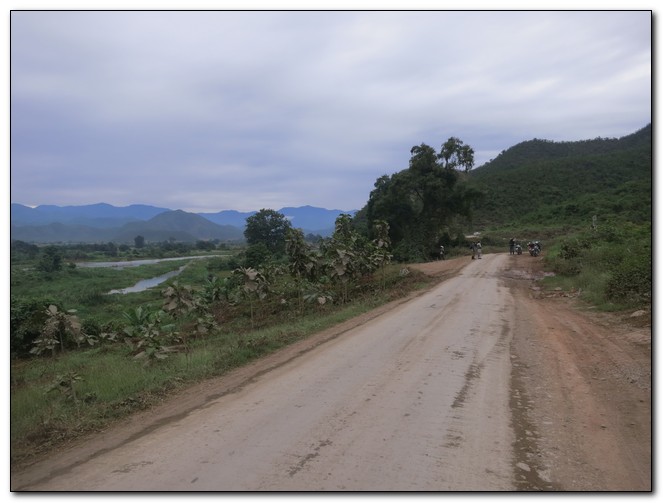
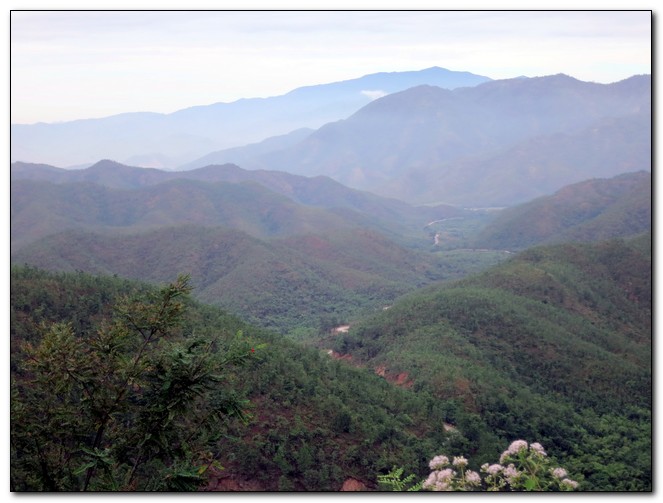
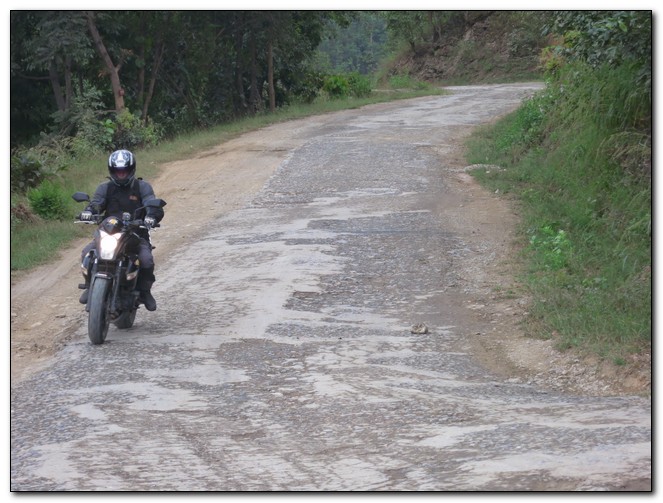 Road building and repair is a slow and back-breaking undertaking. It appears to be done by mostly women laborers. Although we passed many construction areas, seldom did we see any type of heavy equipment.
Road building and repair is a slow and back-breaking undertaking. It appears to be done by mostly women laborers. Although we passed many construction areas, seldom did we see any type of heavy equipment.
These young girls would put large stones onto a metal tray. They would then stand up and walk to the truck; lift the tray and rocks over their heads; empty them into the truck and then do it all over again. There was always a male ‘minder’ standing nearby each group of workers.
The homes in this part of Shan State seemed to be more substantial with cement block and concrete construction. The design didn’t take much imagination. 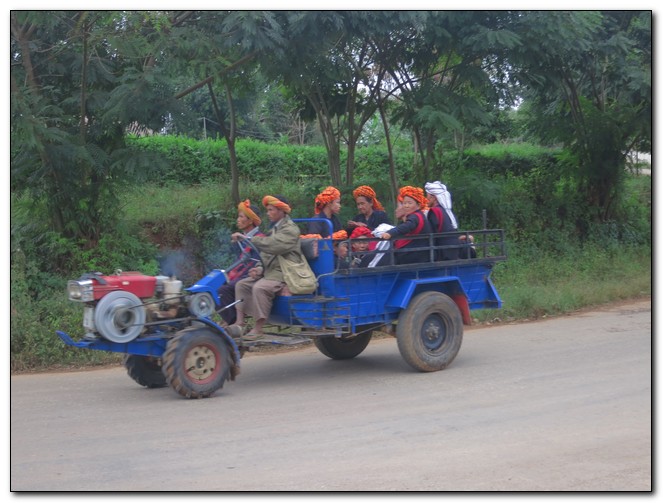
Throughout our trip, the roads had dirt paths on the sides for Ox and Horse Carts. Some quick evasive riding was necessary when they would suddenly decidedto cross the road in front of us. Also trucks and buses usually had to drop off to one side to allow oncoming traffic to pass. For us, this meant dirty and dusty riding most of the trip.
Welcome to Inle (Inlay) Lake
Inle Lake is a 45 square mile (72 km) lake, at an elevation of 2,900 feet (884 meter). The highest lake in Myanmar. It is surrounded by four small cities and numerous villages with a population totaling 70,000 people. It’s main draw is the floating gardens, floating village, and also the leg rowing fisherman. They propel their boats by using one leg to row while standing. This unique style evolved for the reason that the lake is covered by reeds and floating plants making it difficult to see above them while sitting. Floating markets also rotate between shoreline villages on alternating days.
I was warned it could be quite touristy at times and that boat tours often just went from shop to shop trying to entice you to buy their goods. Our guide made arrangements for us to avoid most of this and in the morning we set out on our single cylinder diesel engine propelled boat.
It was actually quite difficult to get a clear photo of the fisherman as the tour boats gave them a wide berth.
Multiple uses. We saw laundry, swimming, bathing, shipping, and even washing motorcycles and water buffalo in the same area.
So onto the floating gardens. The people plant vegetables, mostly tomatoes which are shipped out by boat, by slowly building up the gardens on floating reeds and water plants.
These guys are actually moving a row of vegetables by pulling with their boats and pushing with bamboo poles.
How large is this area? Here is a partial view from Google Earth,
In the midst of this you can see the floating village. i can’t find the actual population, but it is a complete village of homes built on stilts. There is a floating Post Office, a school (though not floating) and various shops. Parked under the houses are resident’s boats. Some homes sport tv satellite dishes. We spent hours cruising the lake and canals of this fascinating area.
A couple of short unedited video, cruising through the floating village.
There are more than 1,000 Stupas built around the lake. Some ancient relics, some preserved, some restored and some new. This is where the conflict I mentioned in Bagan comes into play. There are factions in Myanmar who each believe funds for stupas should be used for different purposes. Some say many stupas are being restored in a haphazard non-original manner, and should just be preserved. Many believe new stupas should not be built but instead use the money for restoration. New generations think they should be able to honor their deceased relatives today as they did in the past, by building a new stupa in their honor. The cost to build a new Stupa is approximately $7,000 USD. The sad fact is that whatever path one chooses, there is not enough money available. A cultural conundrum.
After an interesting. long, tiring, enjoyable day on the lake, it is time to head back to our hotel and prepare for the last legs of our journey.
Our last two days in Myanmar are spent mostly on winding, well paved mountain roads. Some are fairly tricky as there is still a lot of loose gravel on the new surface. Quite enjoyable for those of us used to Northern Thailand roads, but a little scary and tiring for some others.
To our surprise and amusement, we found part of our return route was also chosen as the bicycling course for the South East Asia Games currently being held. We had already been informed that we would not be able to stay, or ride through Naypidaw (the new Capital City of Myanmar) where the games were centered.
While riding a Naypidaw bypass road we were, for the first time, stopped at a checkpoint and asked to produce all our papers. I mean really, where did they think we came from? We know we were monitored our whole route. You can see how concerned we were. After finding everything in order, they gave us a wave and a smile and we were again on our way.
Final Days
Our final nights were spent in beautiful resorts in Taungoo and Hpa An. I would gladly have spent a few days in either of these locations just relaxing, but our schedule was not flexible. Our support truck was washed and bikes checked.
In Hpa An, one bike was loaded in the truck as one of the riders was ill and felt he couldn’t ride any longer. We did quite well considering the size of the group. There were a few very exhausted riders by the last day, but they pressed on. We had about three cases of stomach problems, some respiratory problems, but fortunately no injuries. Joe kept the bikes running flawlessly, and also at times rode one of the motorcycles while the rider took a break in a support vehicle.
Repairs were necessary for only a puncture, a broken clutch cable, and a loose battery cable. Each fixed on the road by Joe within a few minutes time.
We never took a full group photo for some reason or another. This is as close as I got before leaving Hpa An. The final leg to the border was only 156 km but it included another trip over the infamous Dawna Mountains. It was again tackled without incident and we arrived at the border before noon. This time the border crossing went smoothly and we processed all our papers in less than an hour.
After crossing the border Luc, and I continued home on our own. The group continued to Mae Sariang. For Luc it was Sukhothai on his way to Bangkok. I spent a relaxing night in Tak, Thailand, and arrived home in Chiang Mai the next day after a rather cold and rainy final day’s ride. Overall, a great experience and chance to make new friends.
**This Post may also be viewed with comments and questions on the GT-Rider Forum.
Filed Under: Burma / Myanmar • Daily Blog • Featured


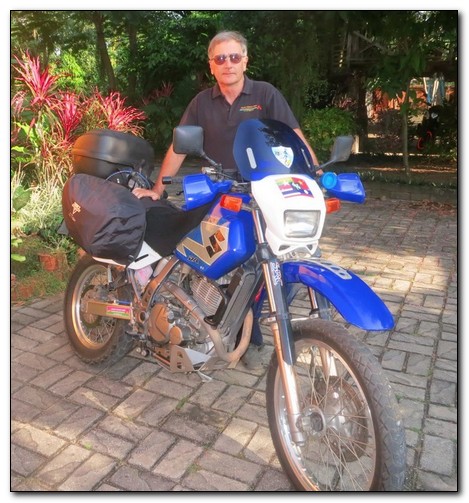

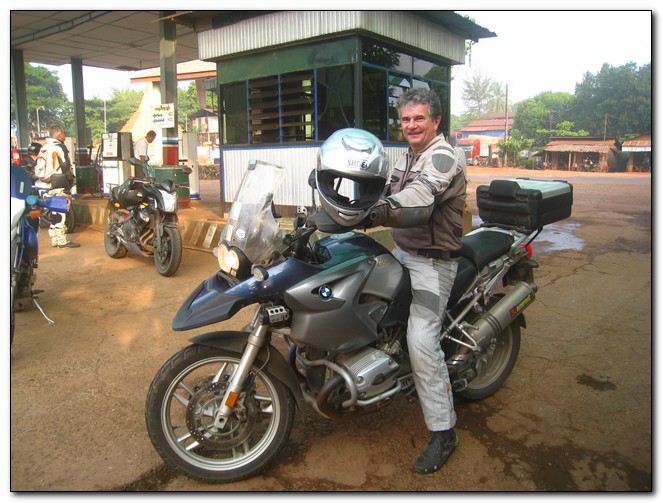
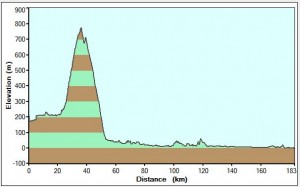


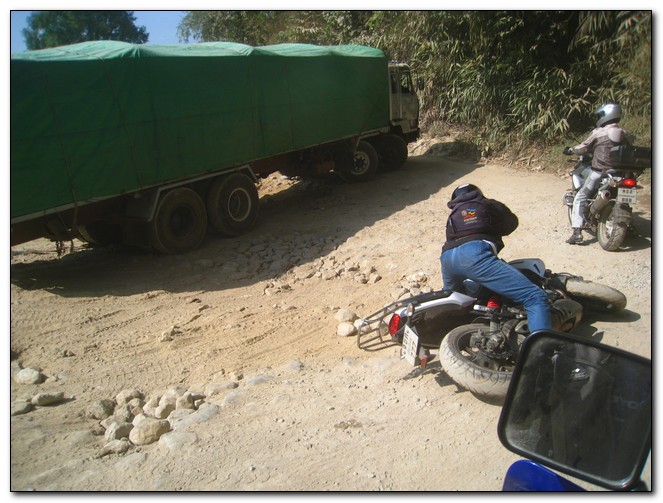
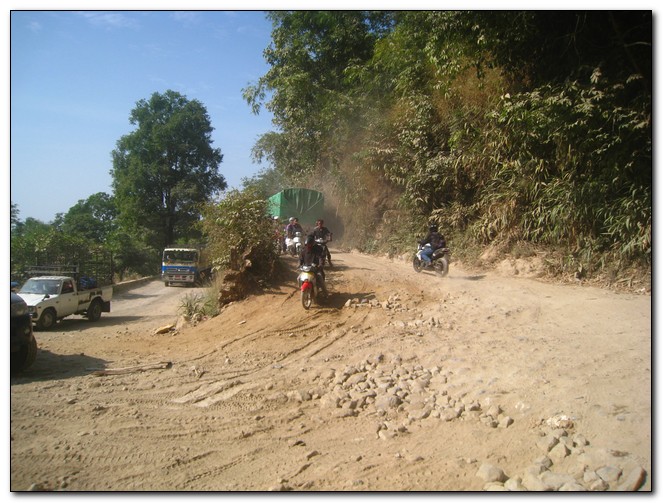

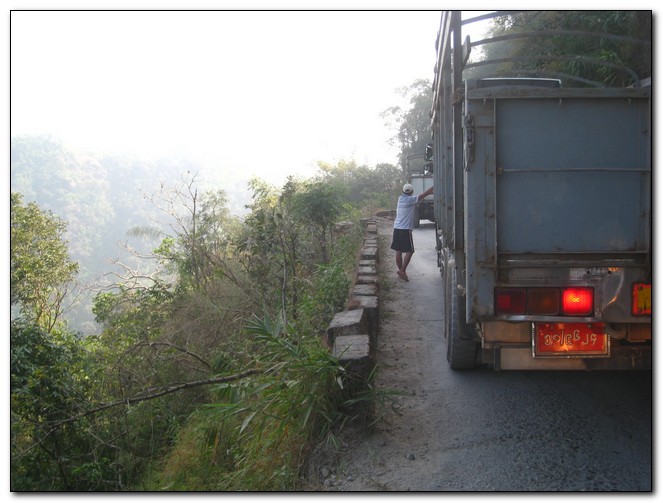
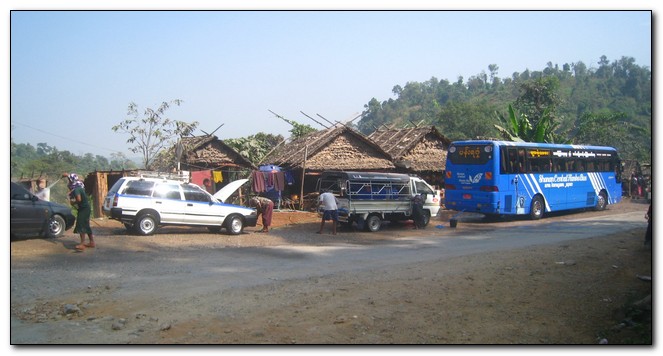
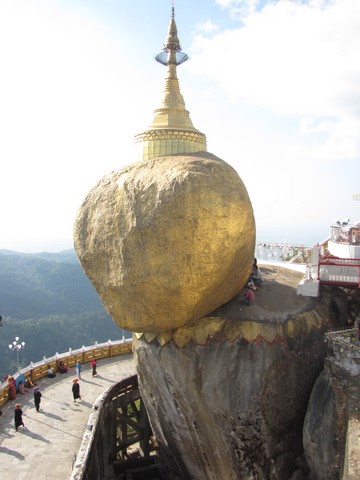


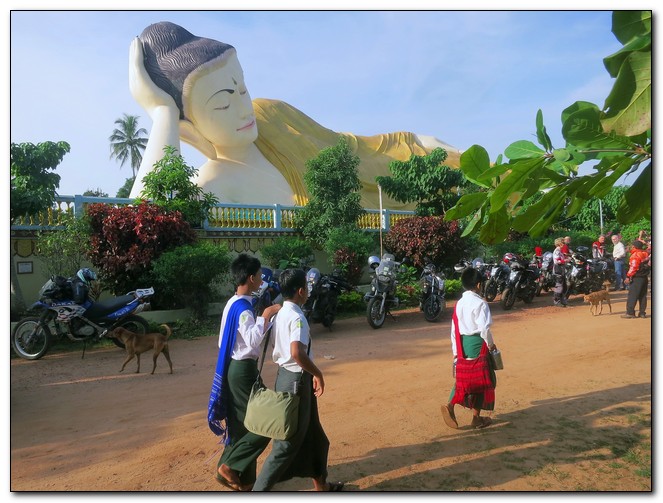

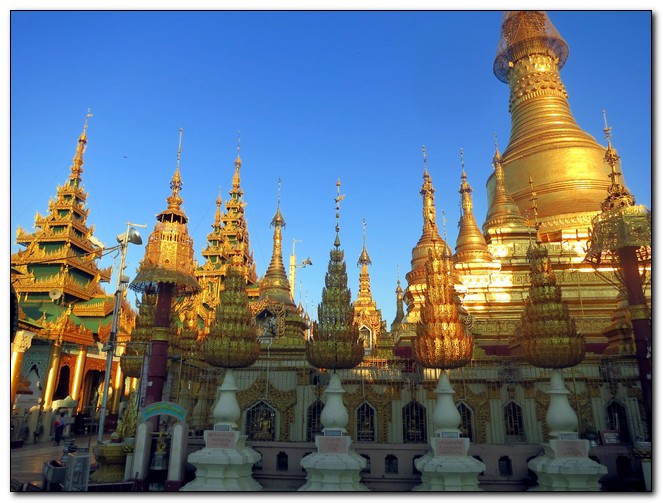
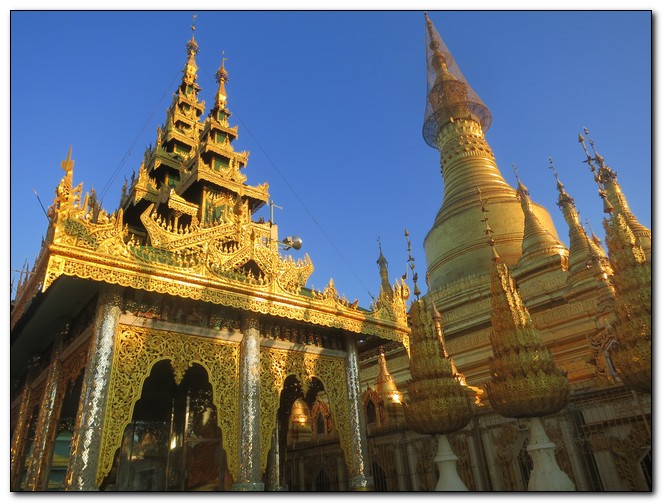
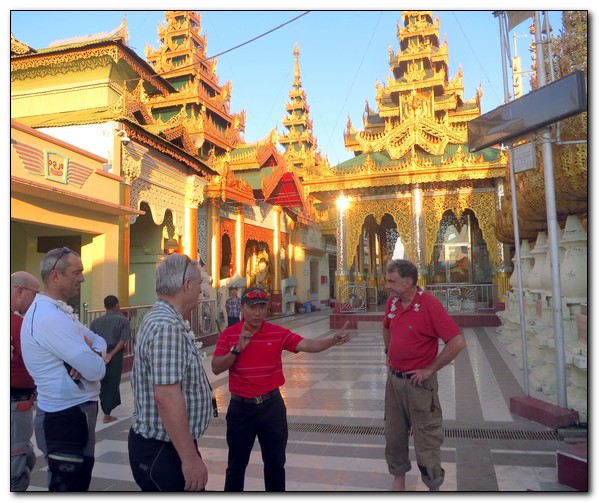





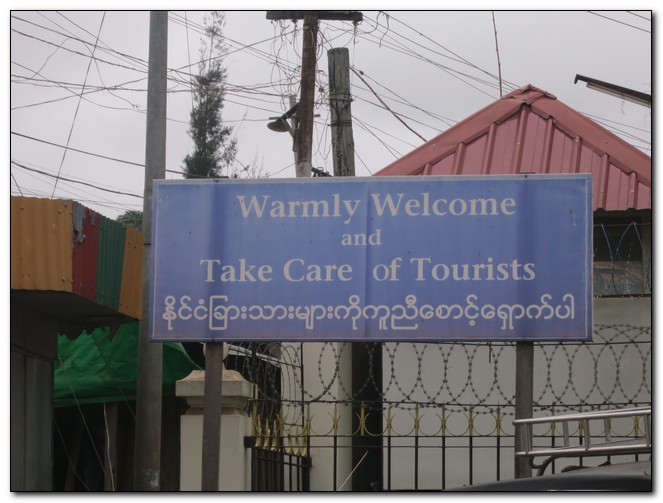
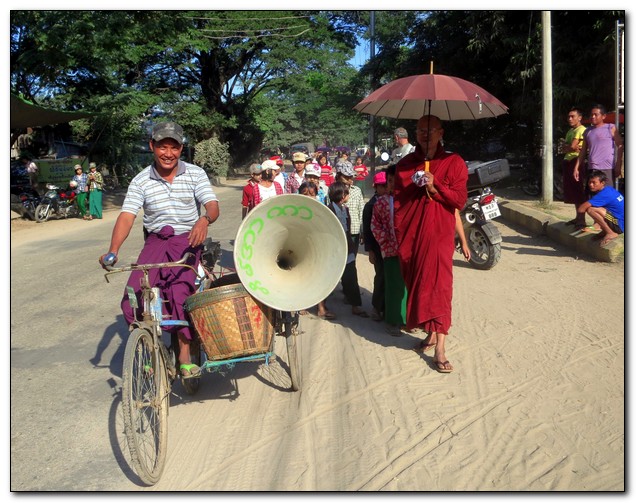
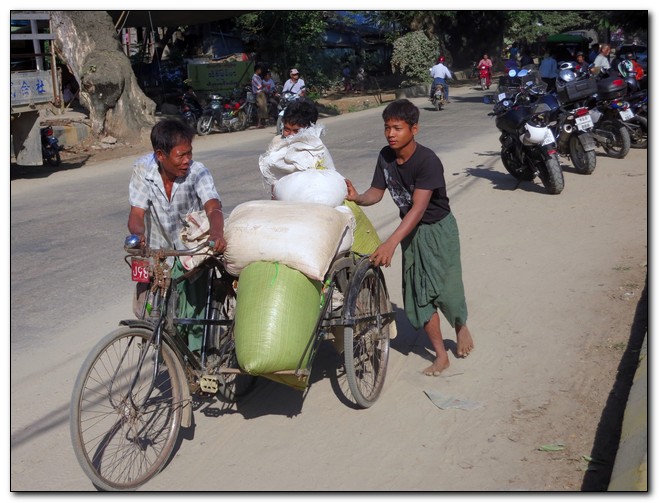


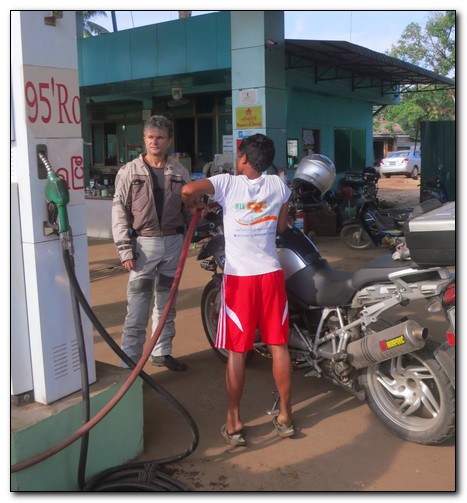
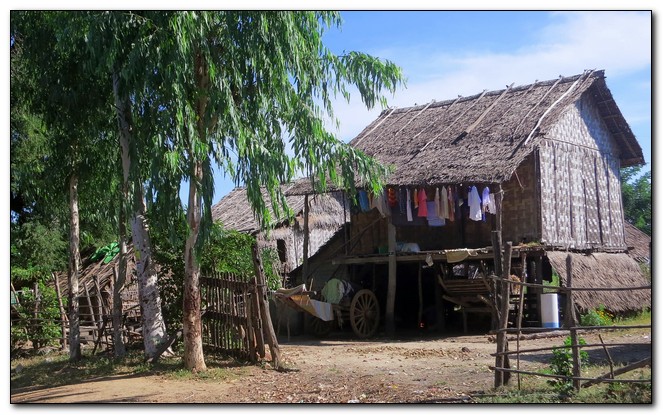
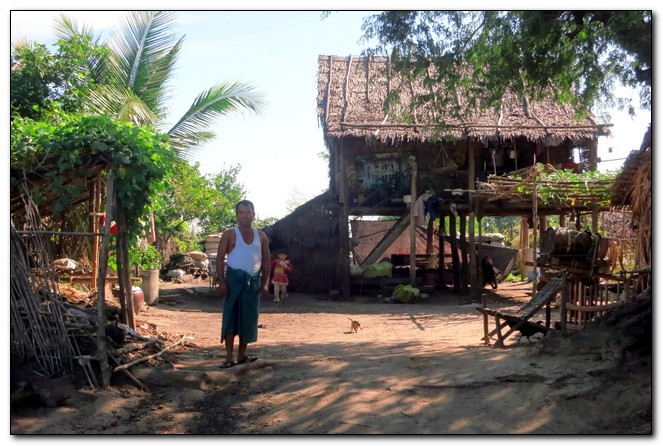
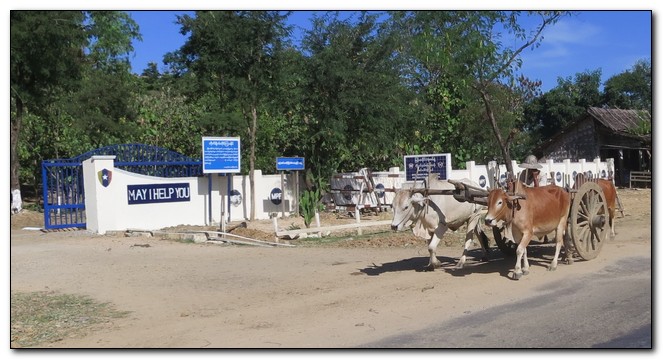
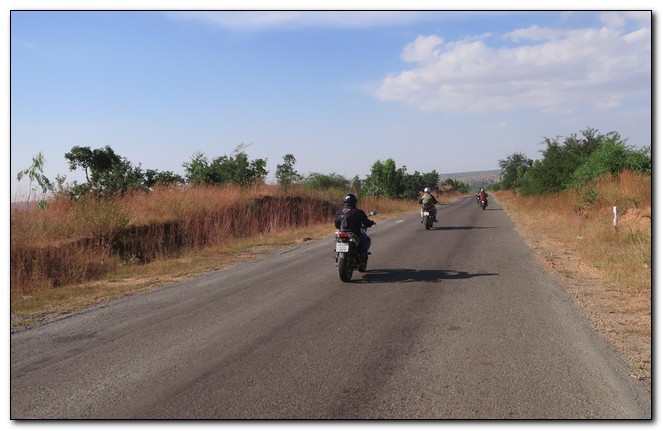
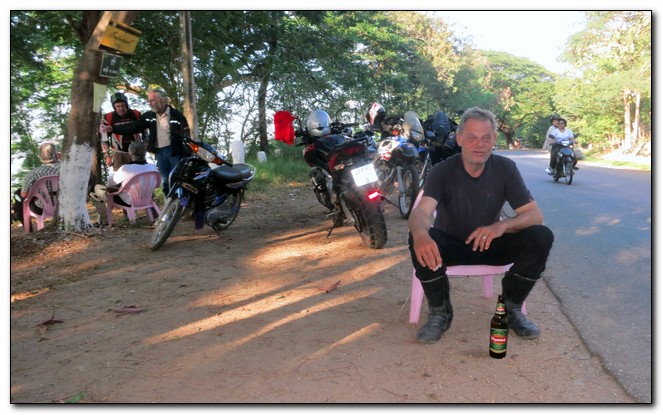
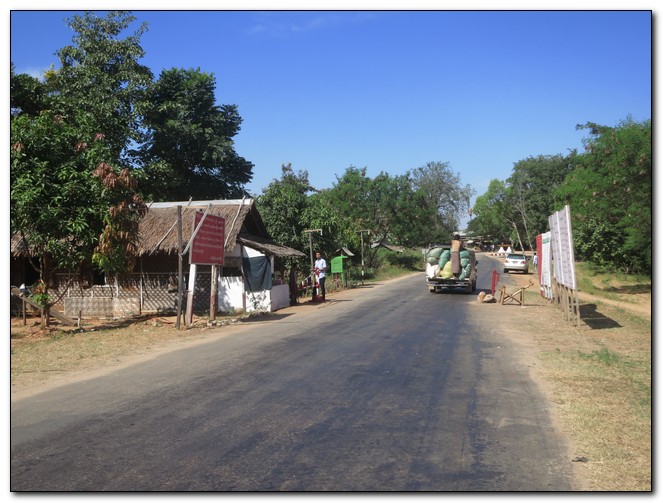
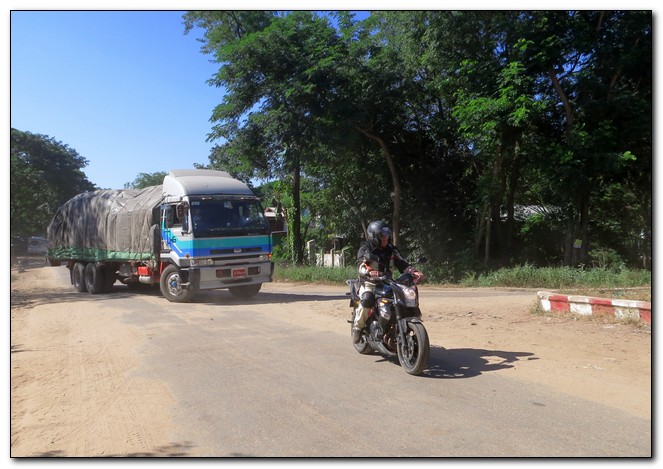

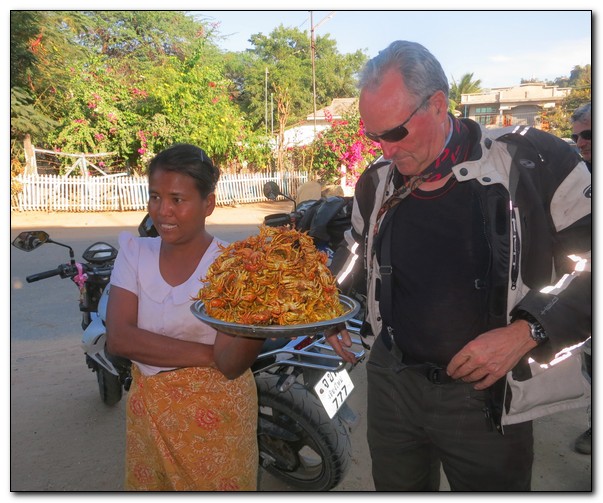
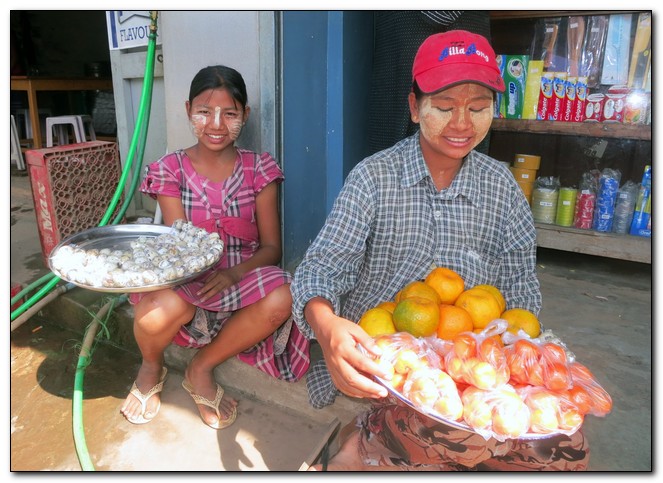


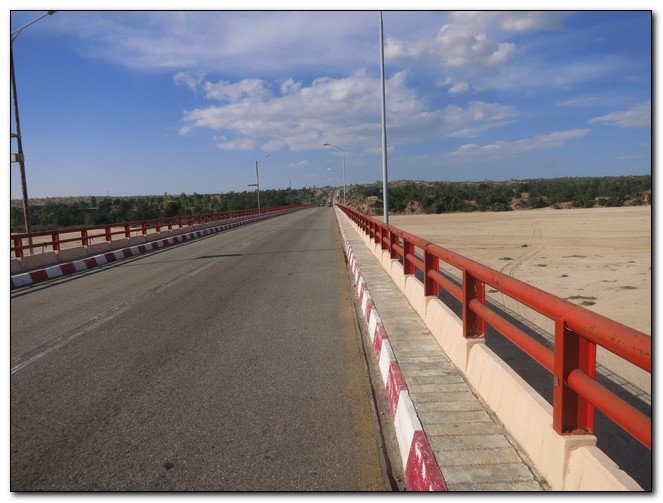

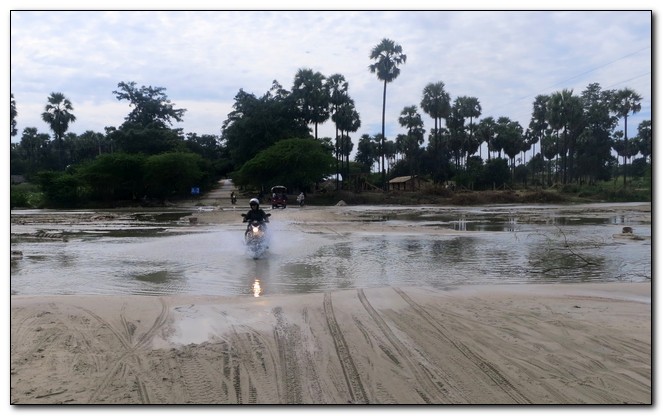


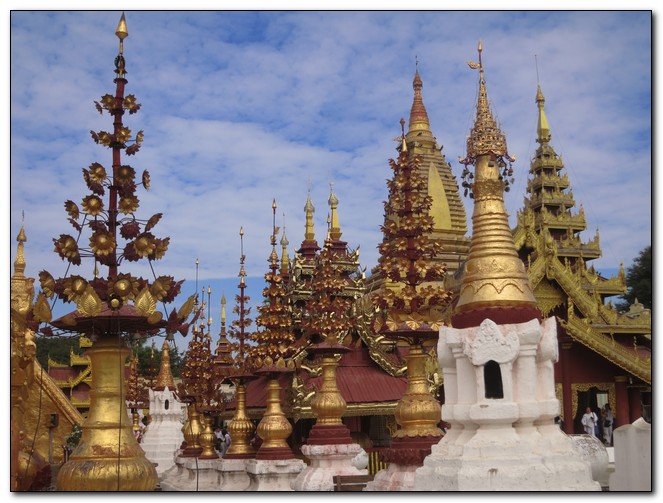
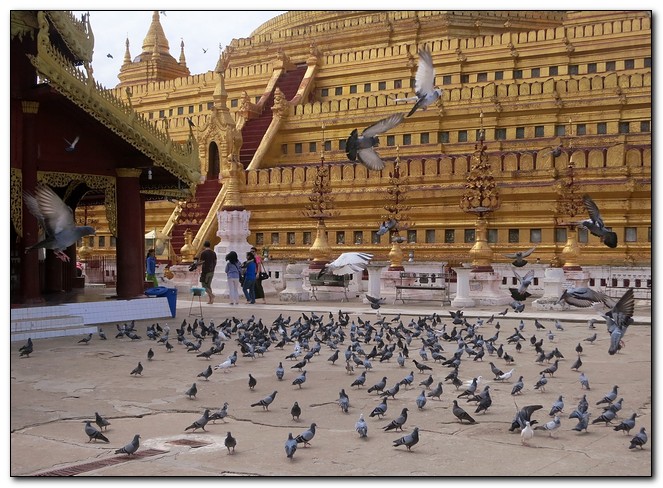

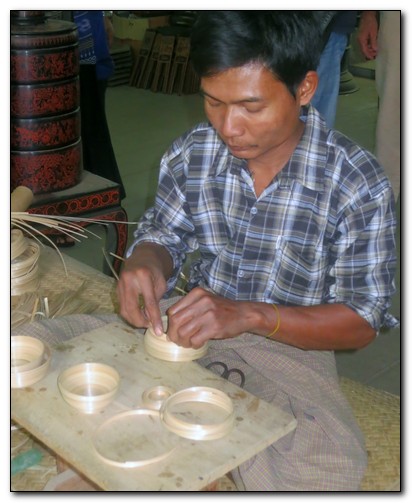

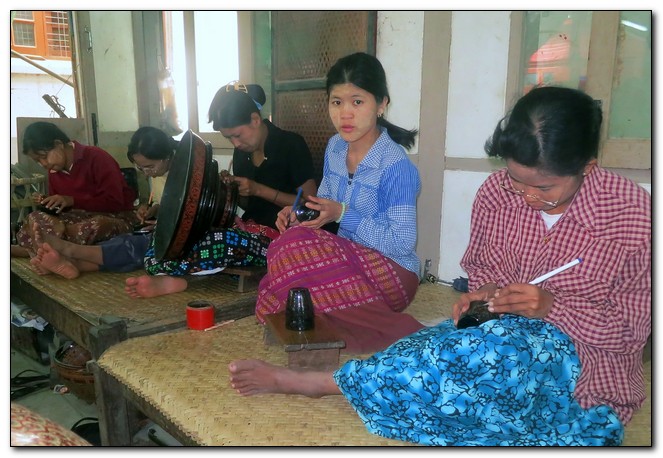
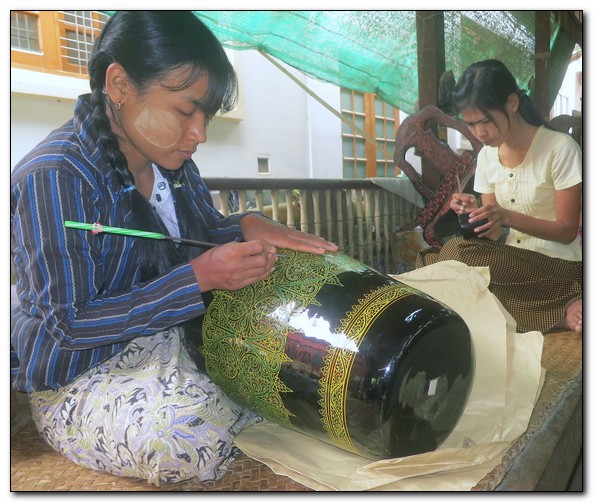
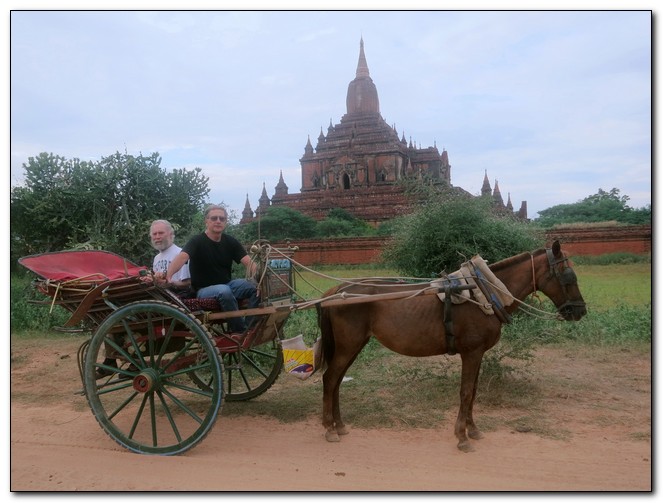
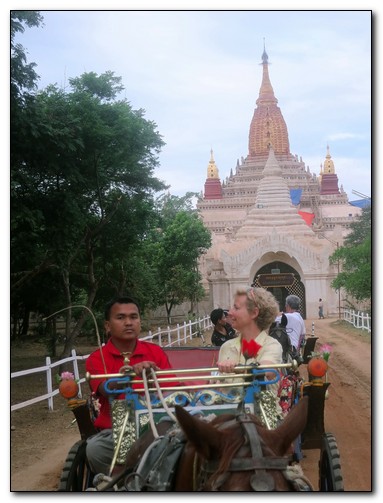
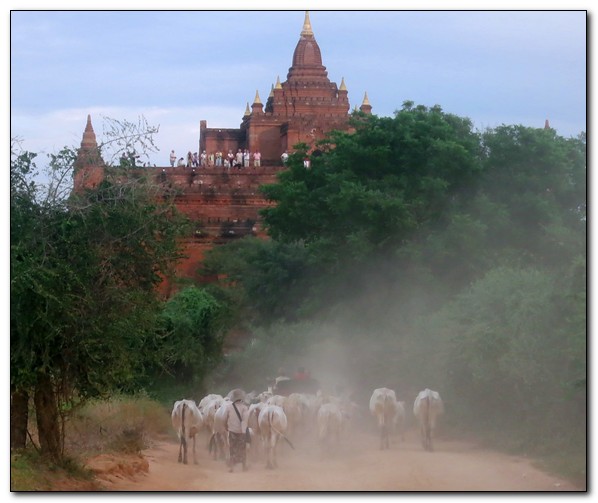
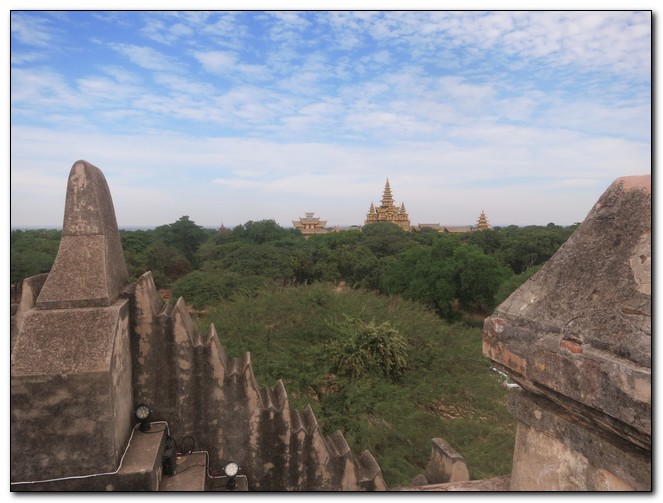

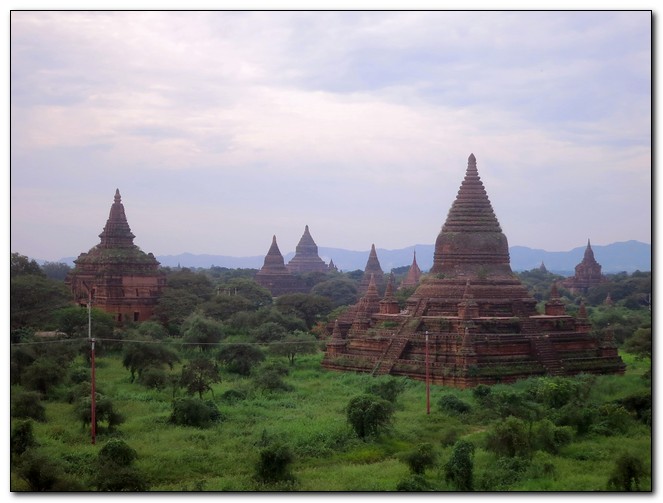


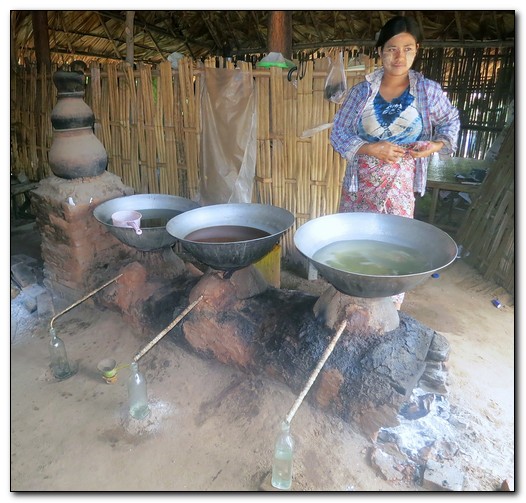



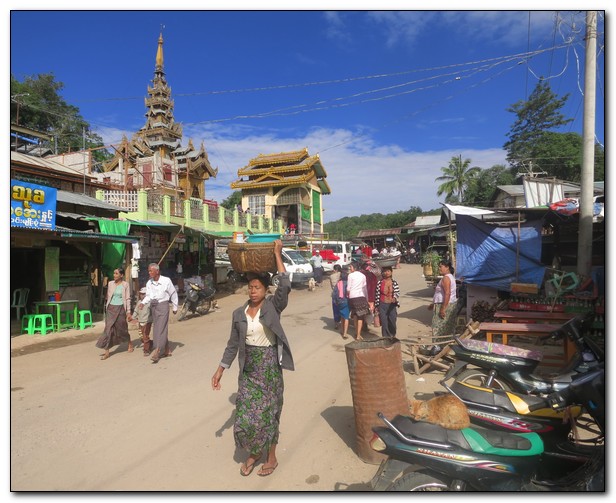

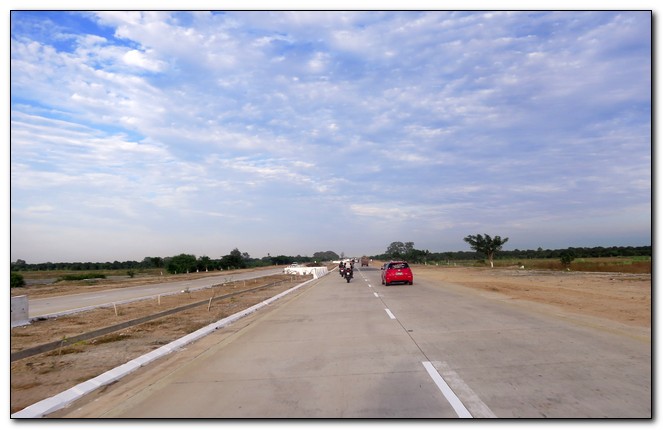



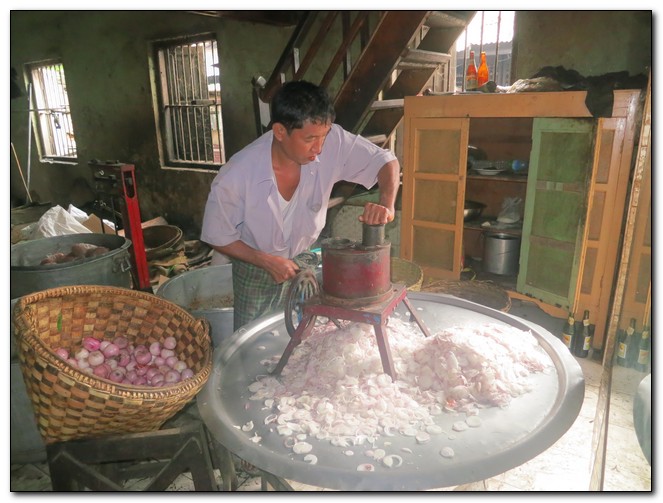
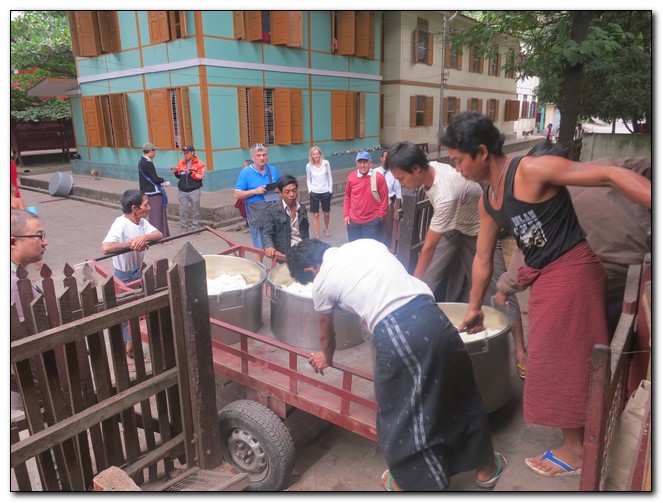
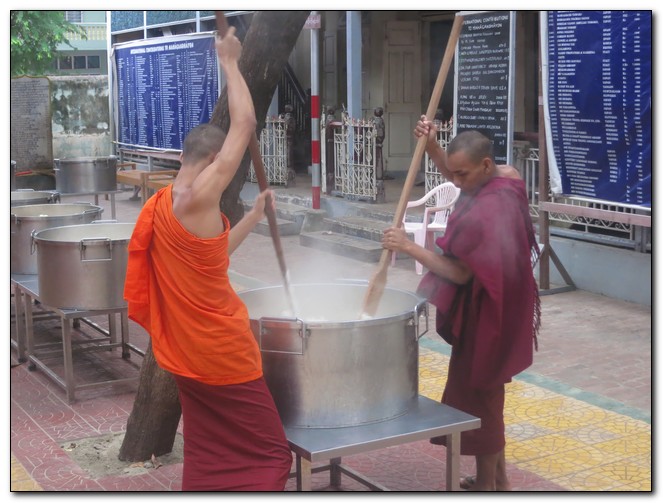


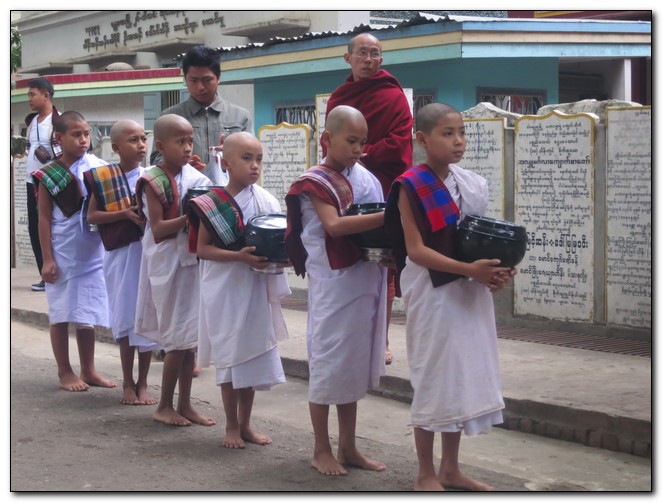
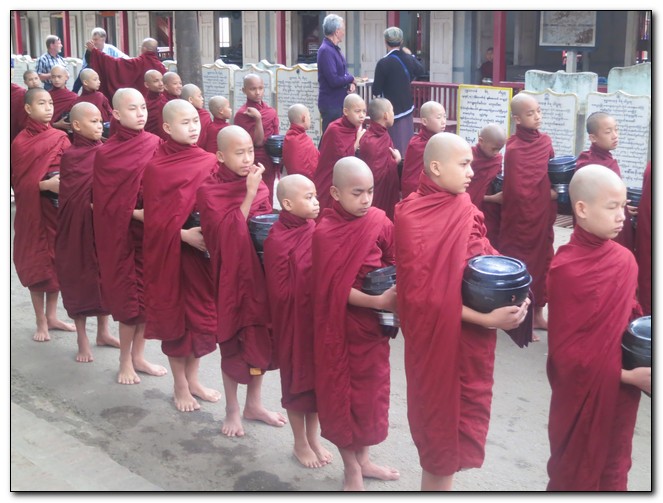
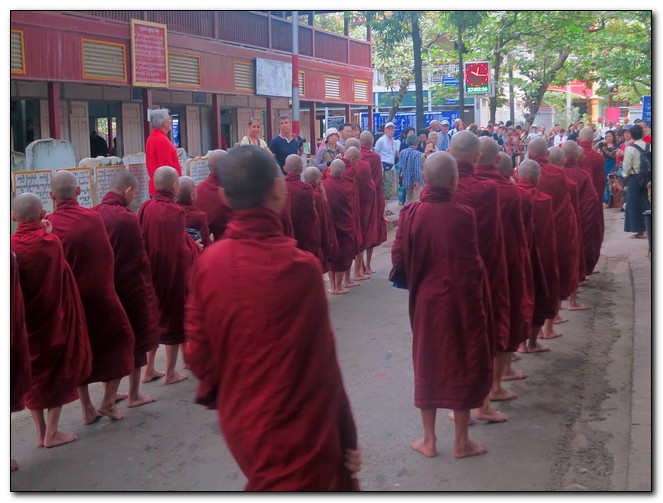


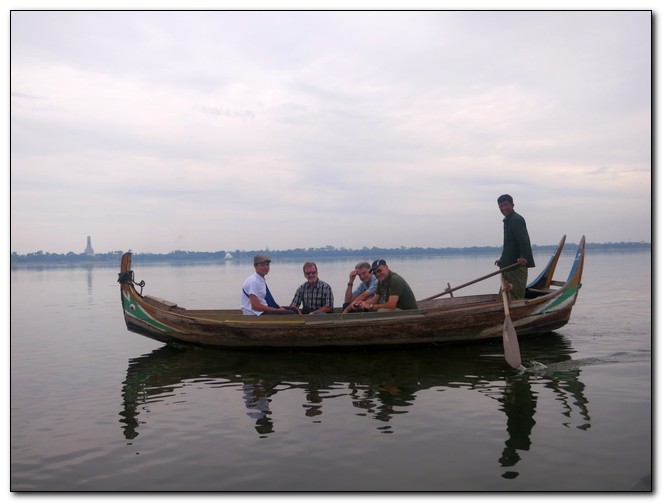
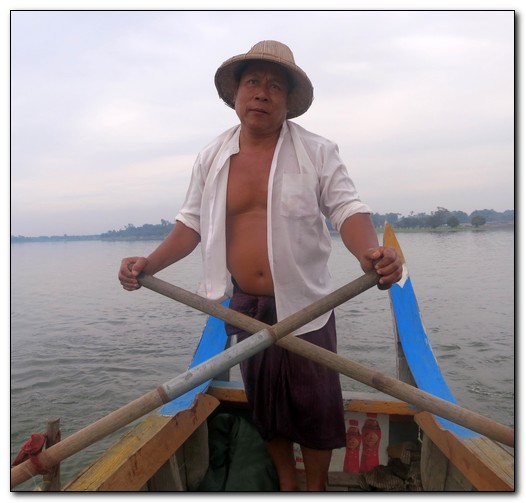

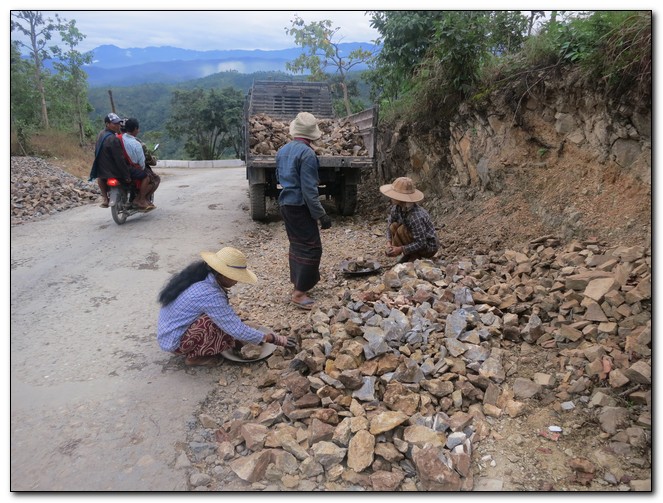

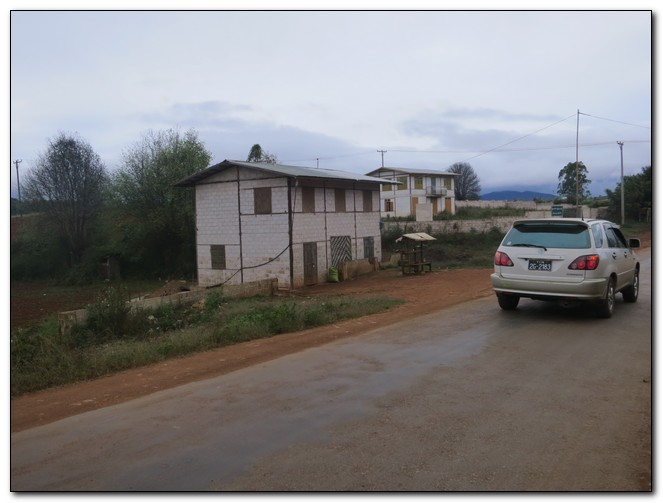
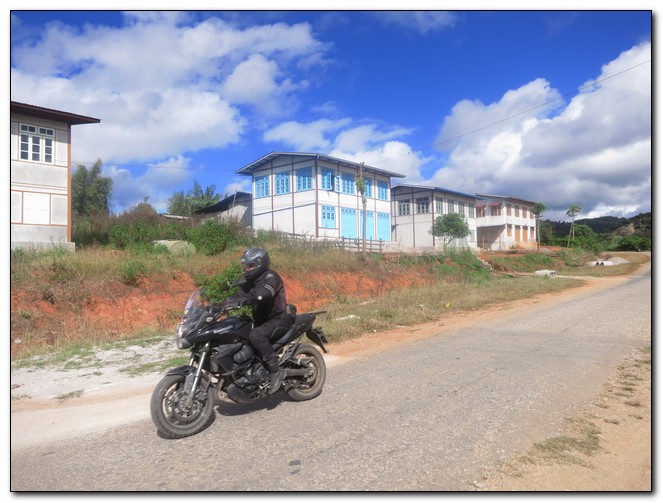
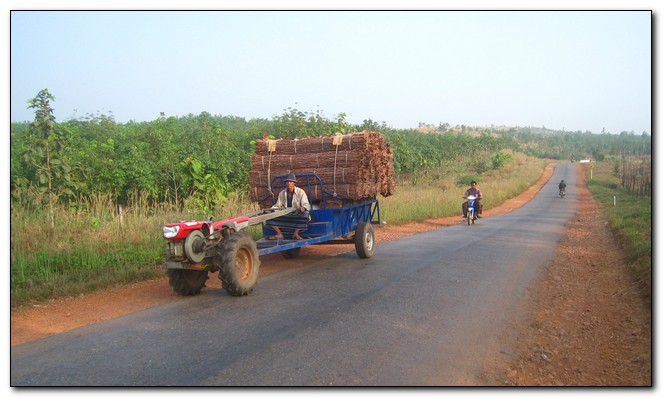
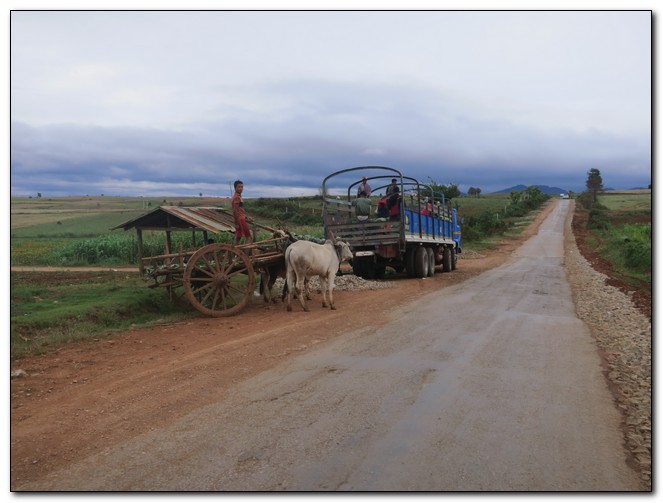
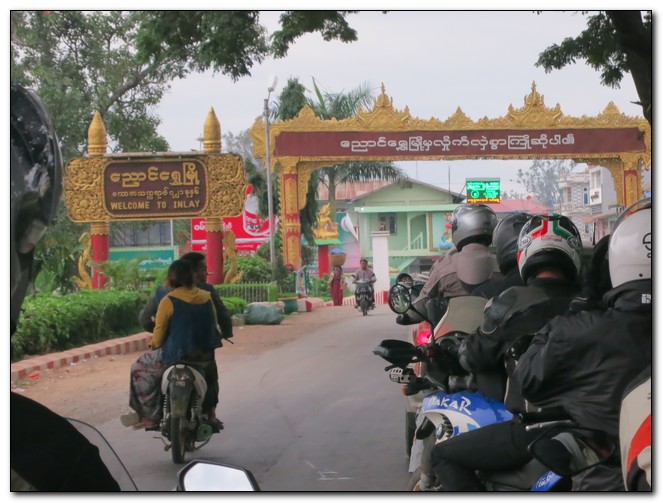
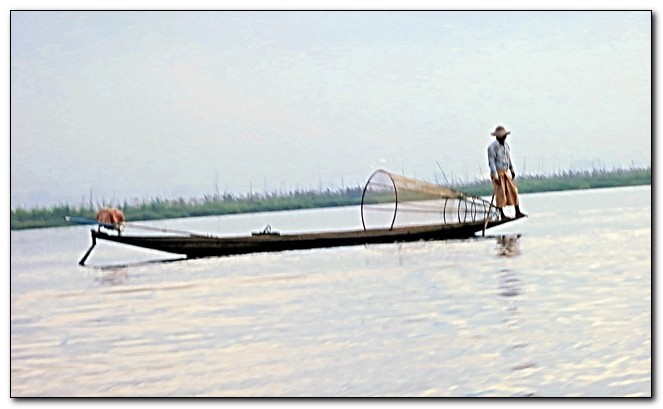

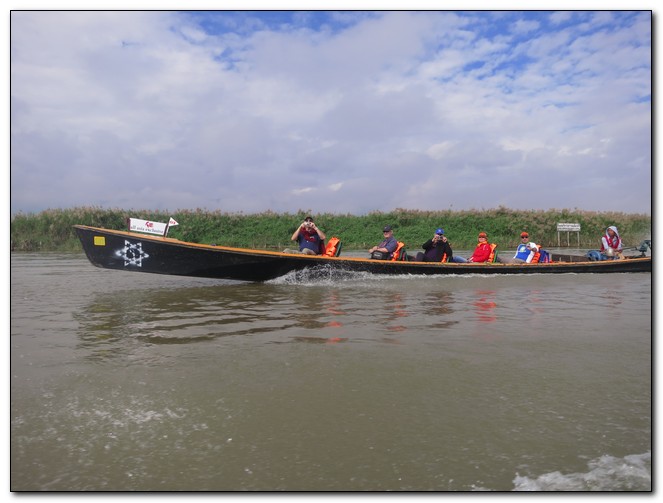




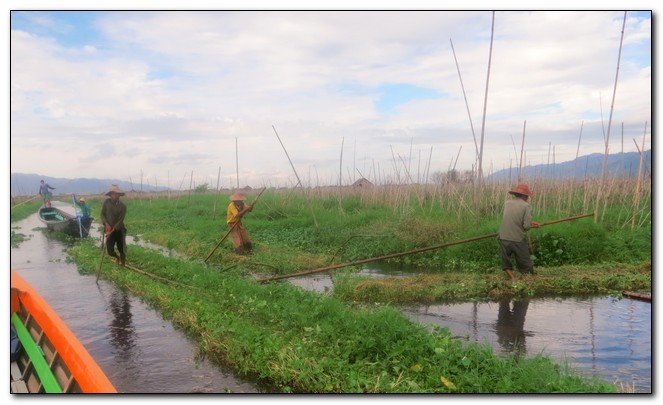
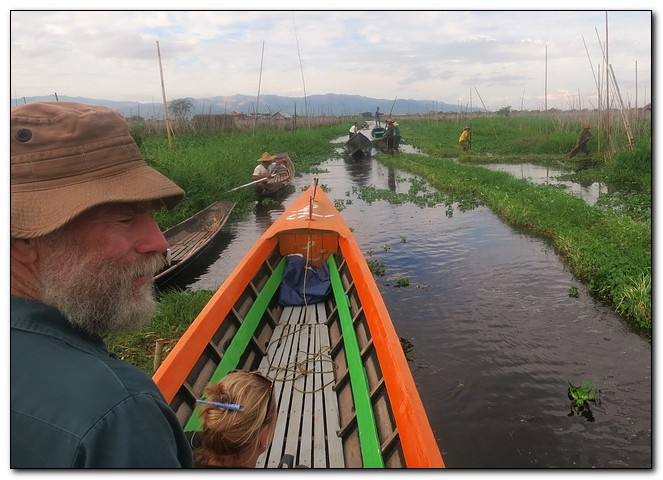
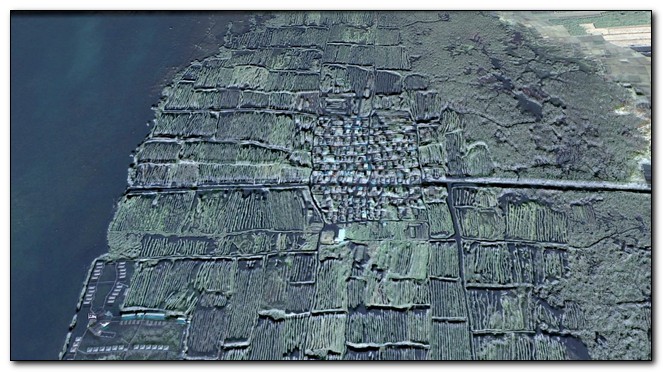
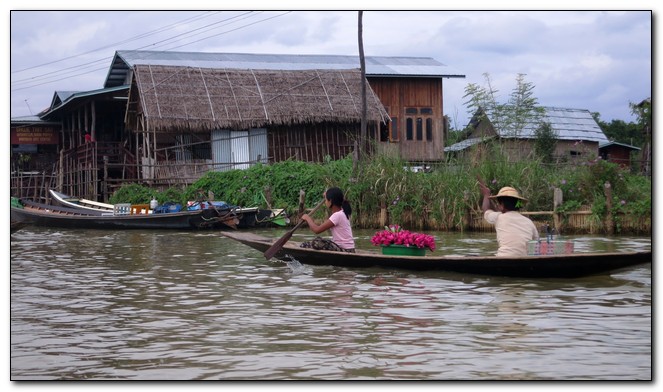

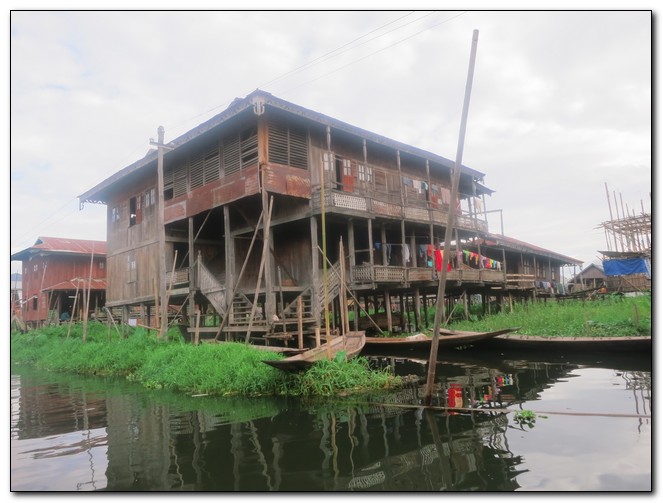
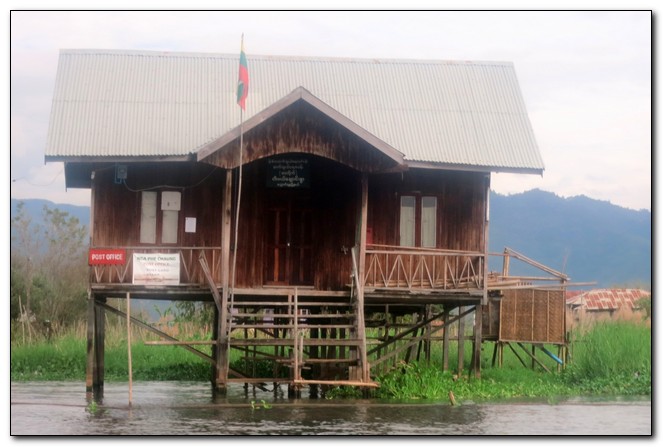
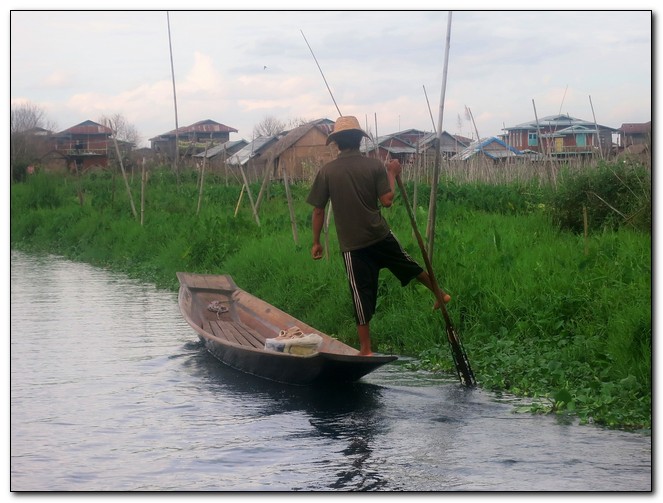
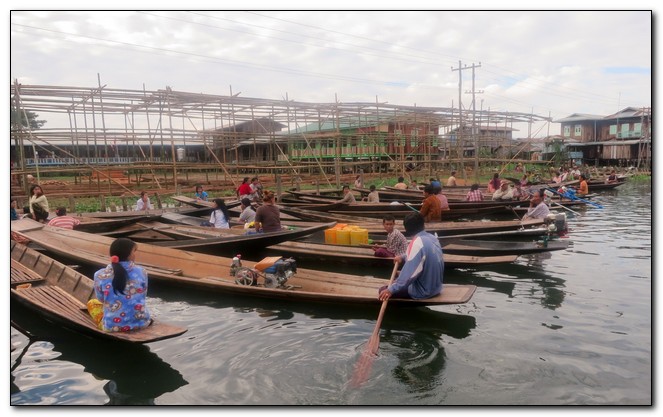

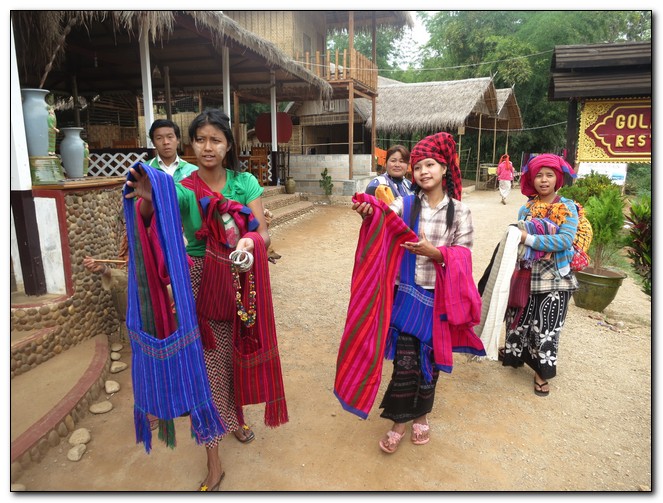
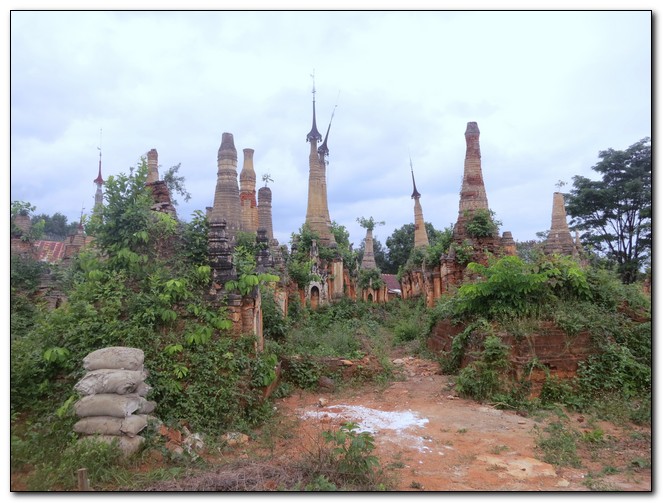
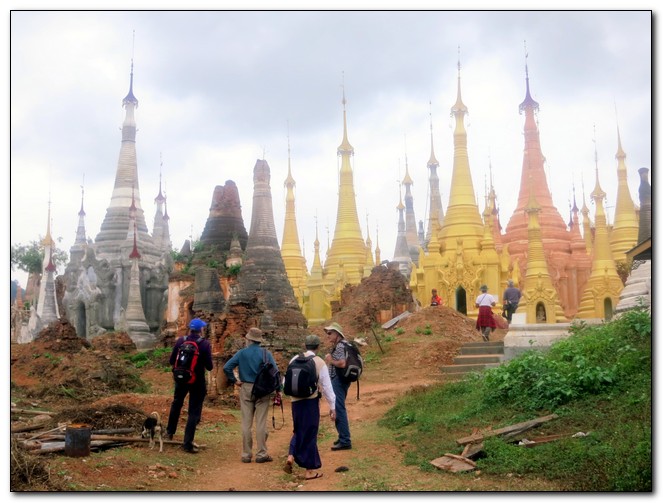
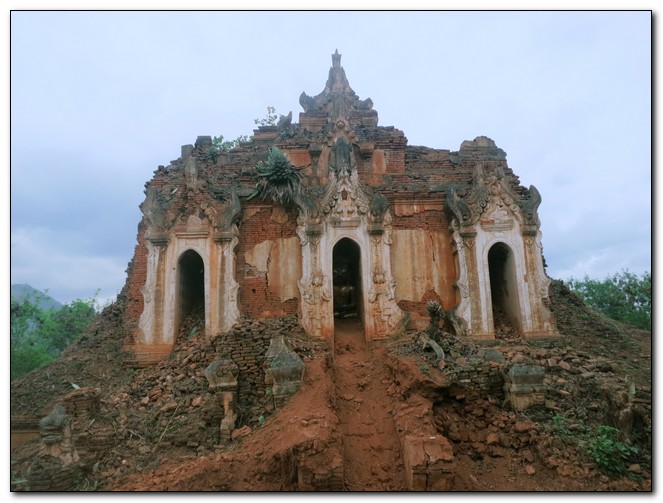

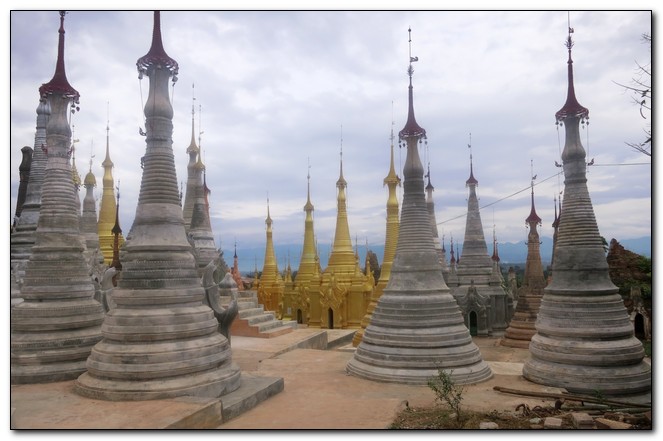

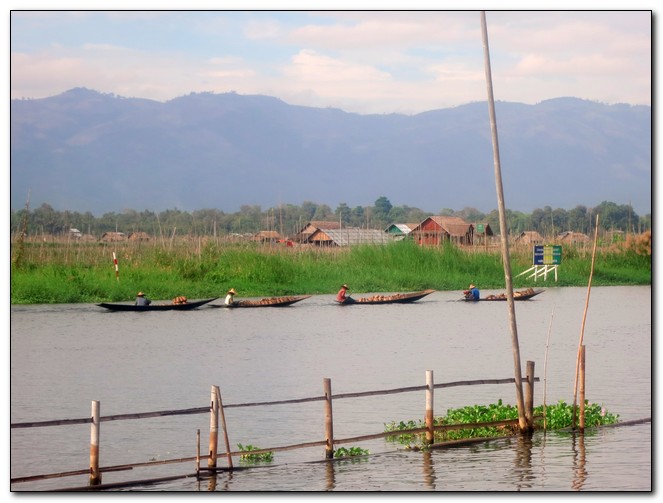

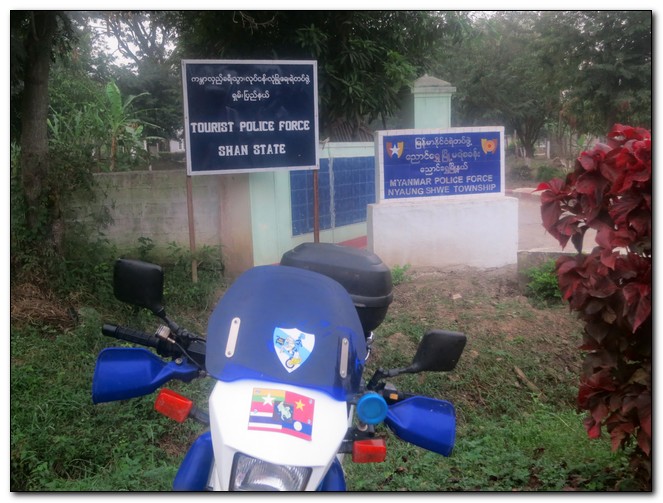
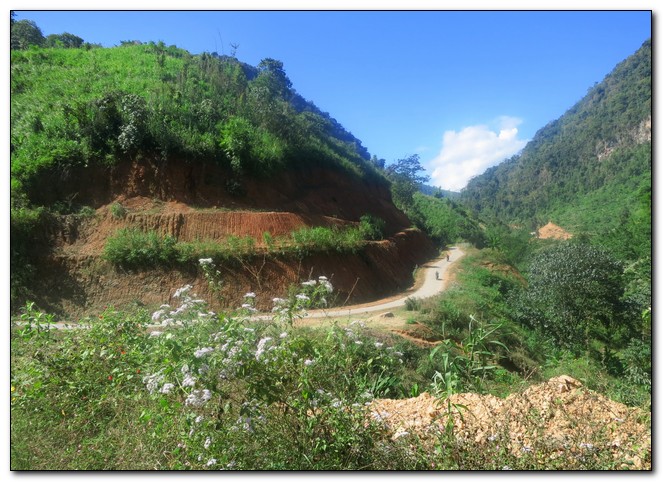





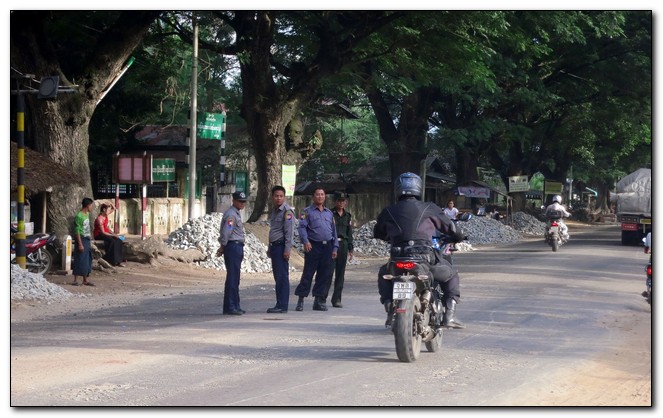
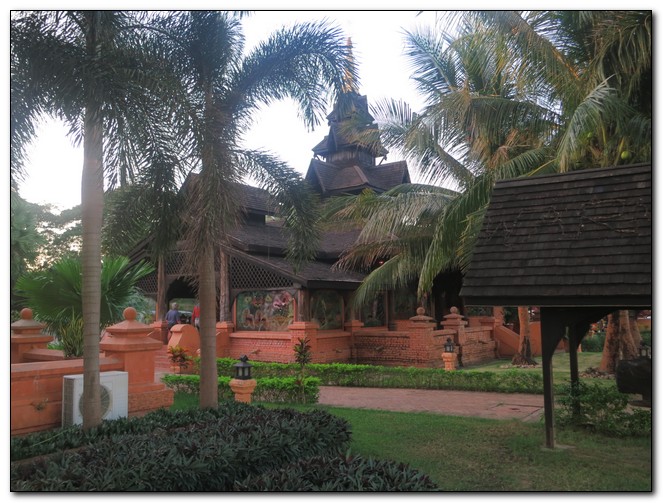
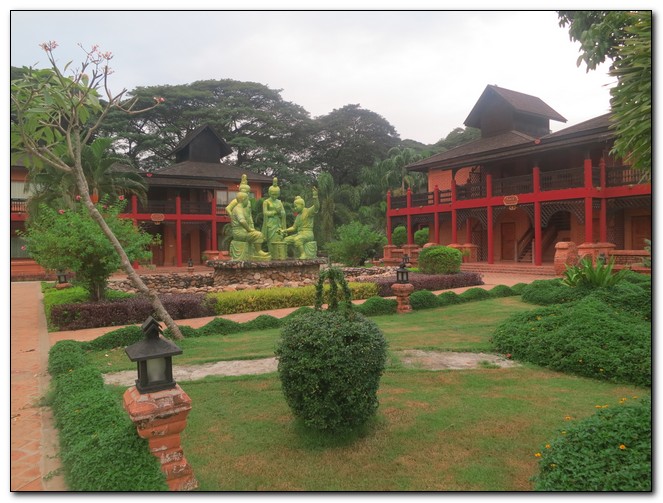

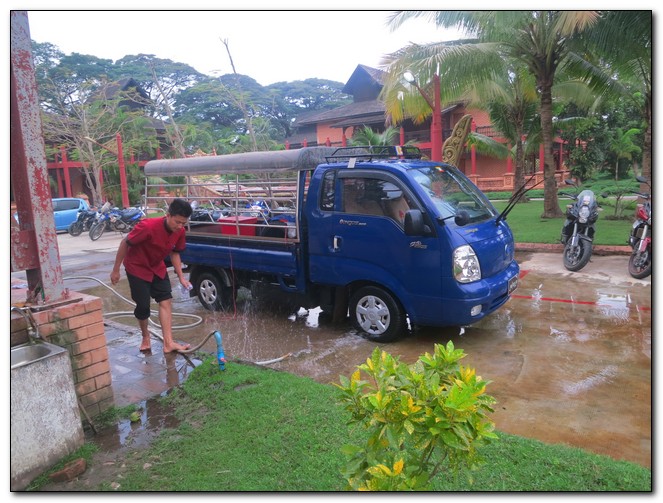

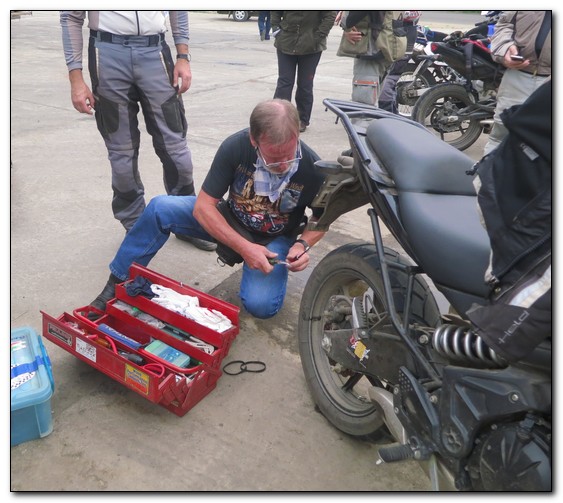
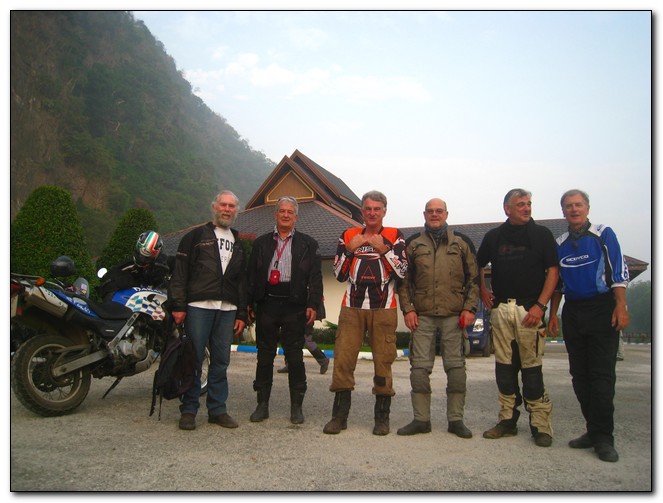
 b GT-Rider
b GT-Rider Richco Motorsports
Richco Motorsports
Fantastic! I am very envious.
Scott